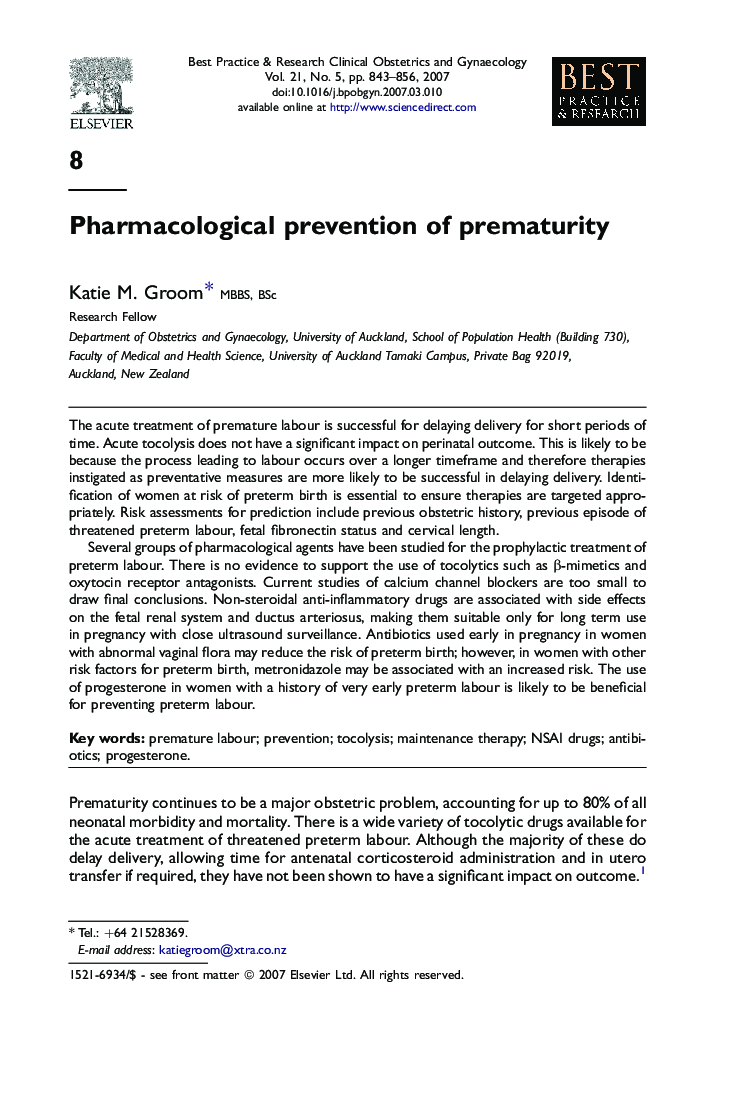| Article ID | Journal | Published Year | Pages | File Type |
|---|---|---|---|---|
| 3907835 | Best Practice & Research Clinical Obstetrics & Gynaecology | 2007 | 14 Pages |
The acute treatment of premature labour is successful for delaying delivery for short periods of time. Acute tocolysis does not have a significant impact on perinatal outcome. This is likely to be because the process leading to labour occurs over a longer timeframe and therefore therapies instigated as preventative measures are more likely to be successful in delaying delivery. Identification of women at risk of preterm birth is essential to ensure therapies are targeted appropriately. Risk assessments for prediction include previous obstetric history, previous episode of threatened preterm labour, fetal fibronectin status and cervical length.Several groups of pharmacological agents have been studied for the prophylactic treatment of preterm labour. There is no evidence to support the use of tocolytics such as β-mimetics and oxytocin receptor antagonists. Current studies of calcium channel blockers are too small to draw final conclusions. Non-steroidal anti-inflammatory drugs are associated with side effects on the fetal renal system and ductus arteriosus, making them suitable only for long term use in pregnancy with close ultrasound surveillance. Antibiotics used early in pregnancy in women with abnormal vaginal flora may reduce the risk of preterm birth; however, in women with other risk factors for preterm birth, metronidazole may be associated with an increased risk. The use of progesterone in women with a history of very early preterm labour is likely to be beneficial for preventing preterm labour.
